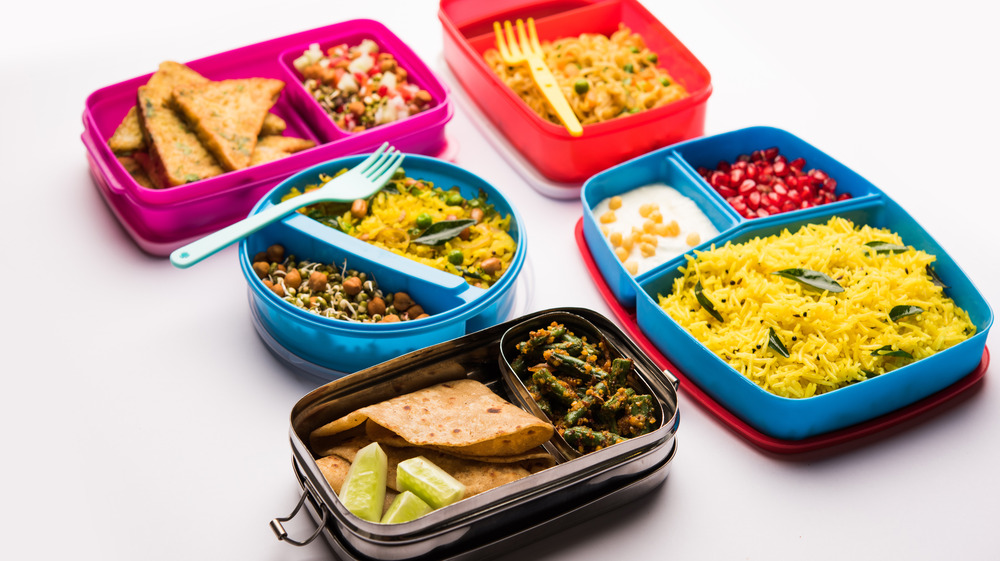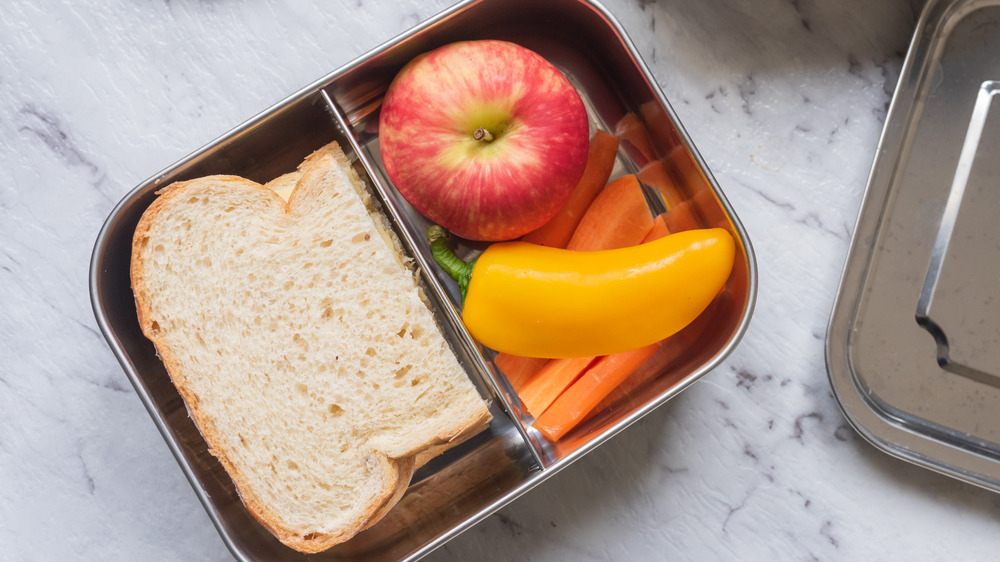This Is The Best Material For Lunch Boxes
Lunch is rarely the forgotten meal when it breaks up a long day. A well-deserved mid-day meal can help us make it to the finish line and keep our productivity going. Running out and grabbing a tasty lunch to go can be a nice treat, but certainly not for every day. According to NASA FCU, Americans drop an average of $2,746 on lunch each year.
If you start bringing lunch from home even a few days a week, you could take yourself on that vacation you've been dreaming about. Bringing lunch to work can be a tough thing to remember when you're rushing out the door in the morning, but keep those dollar signs in mind and you'll be sure to grab your lunch. Not too long ago, a thing of the past revisited adults around the globe: lunch boxes.
While lunch boxes were never only for kids, they gained huge popularity amongst school children in the 1950s, when food and beverage container company Aladdin "realized they could sell more of their relatively indestructible lunch boxes if they decorated them with the fleeting icons of popular culture," confirms Smithsonian Magazine. Lunch boxes were a sign of self-expression, another accessory, and all the cool kids wanted their lunch box to reflect the hip new thing they were into that year.
Reach for a stainless steel container when packing your lunch
If you're ready to join the lunch box club, you're likely wondering which one to choose. The revitalized lunch box fad introduced many different styles and options, but Eqo Living confirms that a stainless steel lunch box is the best choice. You've likely seen "BPA-free" stickers on water bottles, lunch containers, and other plastic receptacles, which means that the toxic chemical bisphenol A isn't in that plastic.
While this is comforting, plastic is still plastic. Recent research shows that even BPA-free plastic can be harmful to us and should stay away from the food and drinks we consume. Avoiding plastic for your food containers altogether is the safest option, especially as research continues to change and develop daily. As Food Matters says, "The bottom line is that plastic is made from toxic materials."
When you weed out plastic, there really aren't many options left when choosing a food container. There are wooden and glass options, but those can be tricky to clean and glass always has the potential to crack or even shatter. No one wants to clean up that backpack. Soft, insulated bags are another popular option, although those often require additional containers to keep things tidy and organized. Stainless steel is easy to clean, lightweight, indestructible, and safe to use. Keep the toxins out and the good food in with this type of lunch box.

